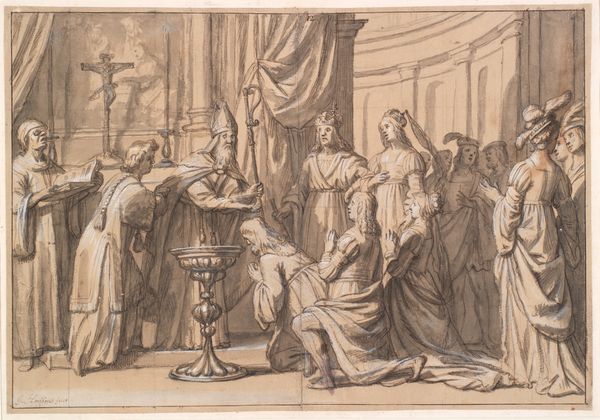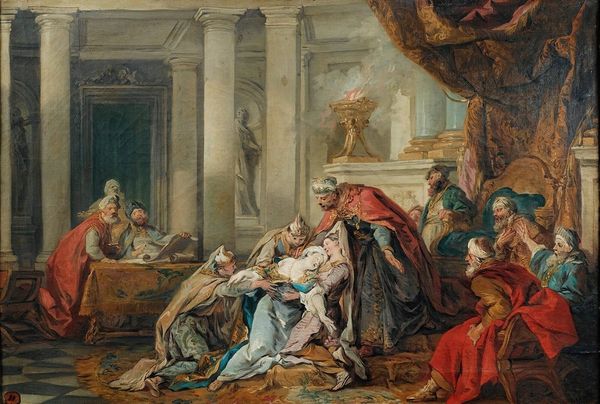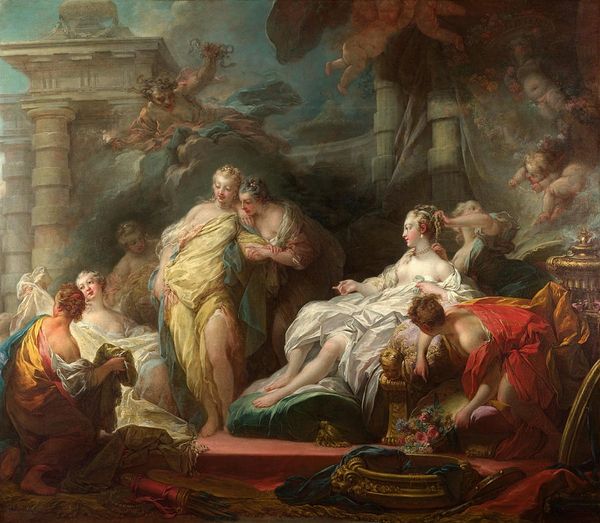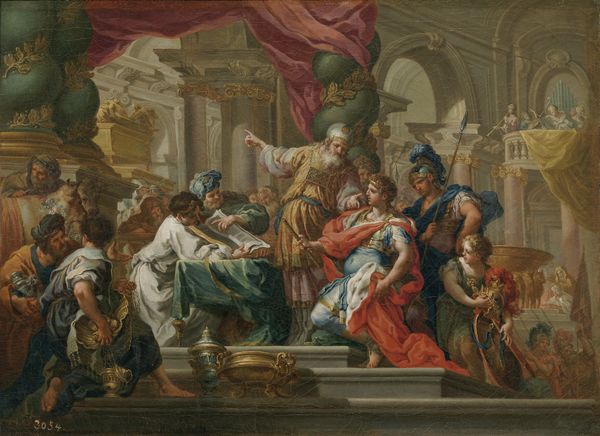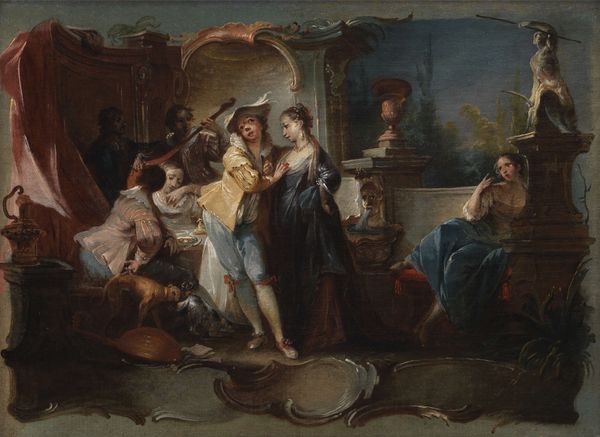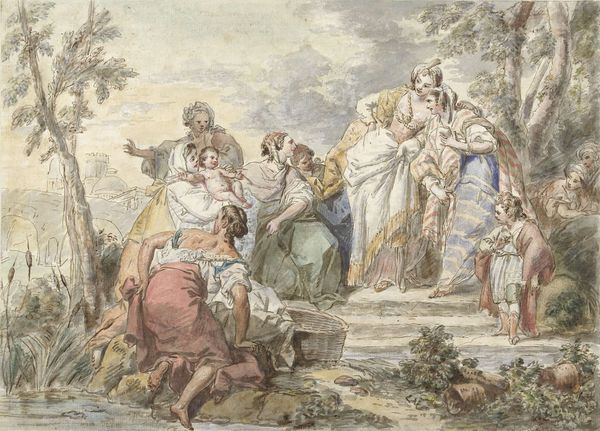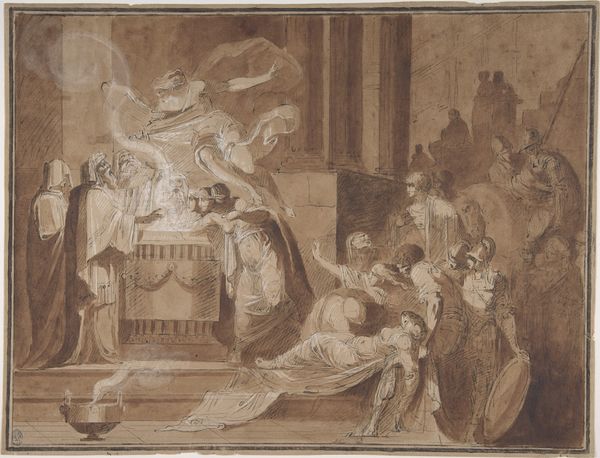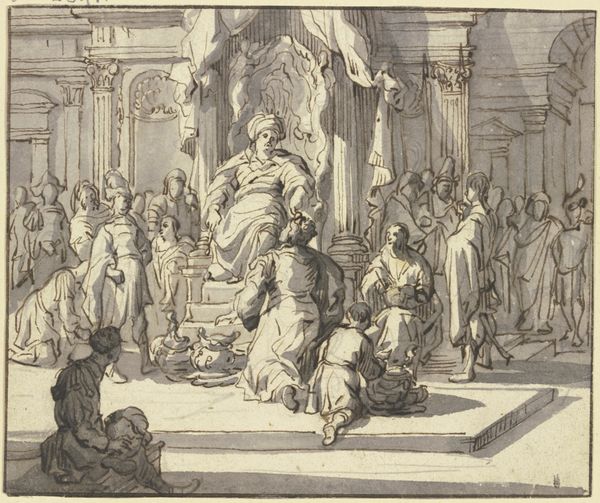
Dimensions: 12 5/8 x 15 3/8 in. (32 x 39 cm)
Copyright: Public Domain
Editor: This is Jean-Bernard Restout's "Dido's Sacrifice to Juno," created between 1767 and 1779, housed at the Met. It appears to be a drawing, maybe watercolor and oil paint? It's such a crowded composition. What story does it seem to be telling and what are its dominant symbols? Curator: What I immediately notice are the clear allusions to power, sacrifice, and divine intervention all interwoven through visual symbols. Think of Juno, she’s presented atop a monumental sculpture— what feelings does that position evoke? It's as if she's witnessing, judging, and perhaps even orchestrating the unfolding scene. Editor: It makes her feel… distant. But, sacrifice, that's an interesting point to make about Dido...I mean, it’s *her* sacrifice that’s the focus. Is she the main symbol? Curator: Well, she embodies several powerful archetypes: queen, priestess, and ultimately, victim. What resonates with you when you consider these multiple roles? The scene is heavy with symbolism. Sacrifice, in particular, isn't merely about offering something material; what else could it signify? Editor: You mean like, self-sacrifice for duty or maybe a kingdom? I didn't really catch the undercurrents until you pointed them out. Curator: Precisely. Symbols offer a doorway into understanding the collective anxieties, hopes, and value systems of the culture that produced them. Now consider this in light of the 18th century— what new perspectives do you glean? Editor: So it’s about *more* than just the surface level... I'll definitely look more deeply into the symbolism from now on! Thanks.
Comments
No comments
Be the first to comment and join the conversation on the ultimate creative platform.

